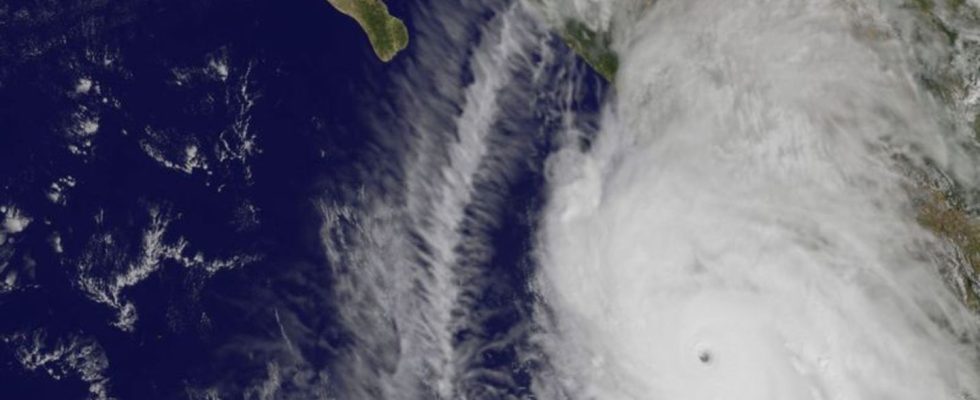storm
More hurricanes – researchers want to expand the hurricane scale
Hurricane Patricia on its way to the west coast of Mexico in October 2015. (Archive image) Photo
© NASA/Noaa Goes Project/dpa
According to two researchers, the speed of some hurricanes has long since exceeded the usual hurricane scale. They propose a sixth category.
The strength of tropical According to two researchers, hurricanes in recent years have exceeded the current hurricane wind scale.
So far this has reached up to Category 5, which includes cyclones with wind speeds of 70 meters per second or more. In recent years, however, several tropical cyclones have had wind speeds of over 86 meters per second, the team writes in the “Proceedings” of the US National Academy of Sciences (“PNAS”). This corresponds to over 309.6 kilometers per hour.
An analysis of data from 1980 to 2021 found that five storms would have been classified in the new hypothetical Category 6, according to the authors. All of these storms occurred in the last nine years of the data series, write Michael Wehner of the Lawrence Berkeley National Laboratory in Berkeley and James Kossin of the University of Wisconsin-Madison.
One reason for the increase is climate change and the associated increase in sea temperatures. This provides additional thermal energy for the hurricanes, which could become stronger.
Risk of strong hurricanes increases
The strongest of the five hurricanes, Hurricane Patricia, occurred in the Eastern Pacific in 2015 and made landfall in Mexico. The remaining four were typhoons, as tropical cyclones are called in the northwest Pacific region. Among them was “Haiyan”, which hit heavily populated islands in the Philippines in 2013 and caused the most deaths of these five cyclones.
According to the researchers, older climate modeling showed that the risk of hypothetical Category 6 cyclones in the Philippines region increases by 50 percent if global warming is 2 degrees above pre-industrial levels. In the Gulf of Mexico the number even doubles.
It has already been suggested in the past that the particularly destructive tropical cyclone “Haiyan” should be included in a category 6, explains the team. “But ‘Haiyan’ doesn’t seem to be an isolated case.” The researchers argue for a change to the current Saffir-Simpson hurricane wind scale, with a Category 5 for peak wind speeds of 70 to 86 meters per second and an additional Category 6 above that.
New scale as an important criterion for warning
A previous study found that most hurricane-related deaths in the U.S. were caused by coastal storm surge (49 percent), followed by flooding from heavy rain (27 percent), deaths directly from wind (8 percent), and several others Causes.
The researchers write that the wind-based scale is only marginally relevant for many factors of destruction. Nevertheless, it remains an important criterion for risk warnings. Adding a 6th category to the hurricane wind scale could also raise awareness of the dangers of the risk of major hurricanes due to global warming.
The Saffir-Simpson hurricane wind scale was introduced in the United States in the early 1970s. Since 2010, winds have been measured at a height of ten meters. While hurricanes move very slowly, their rotating winds are very fast.

